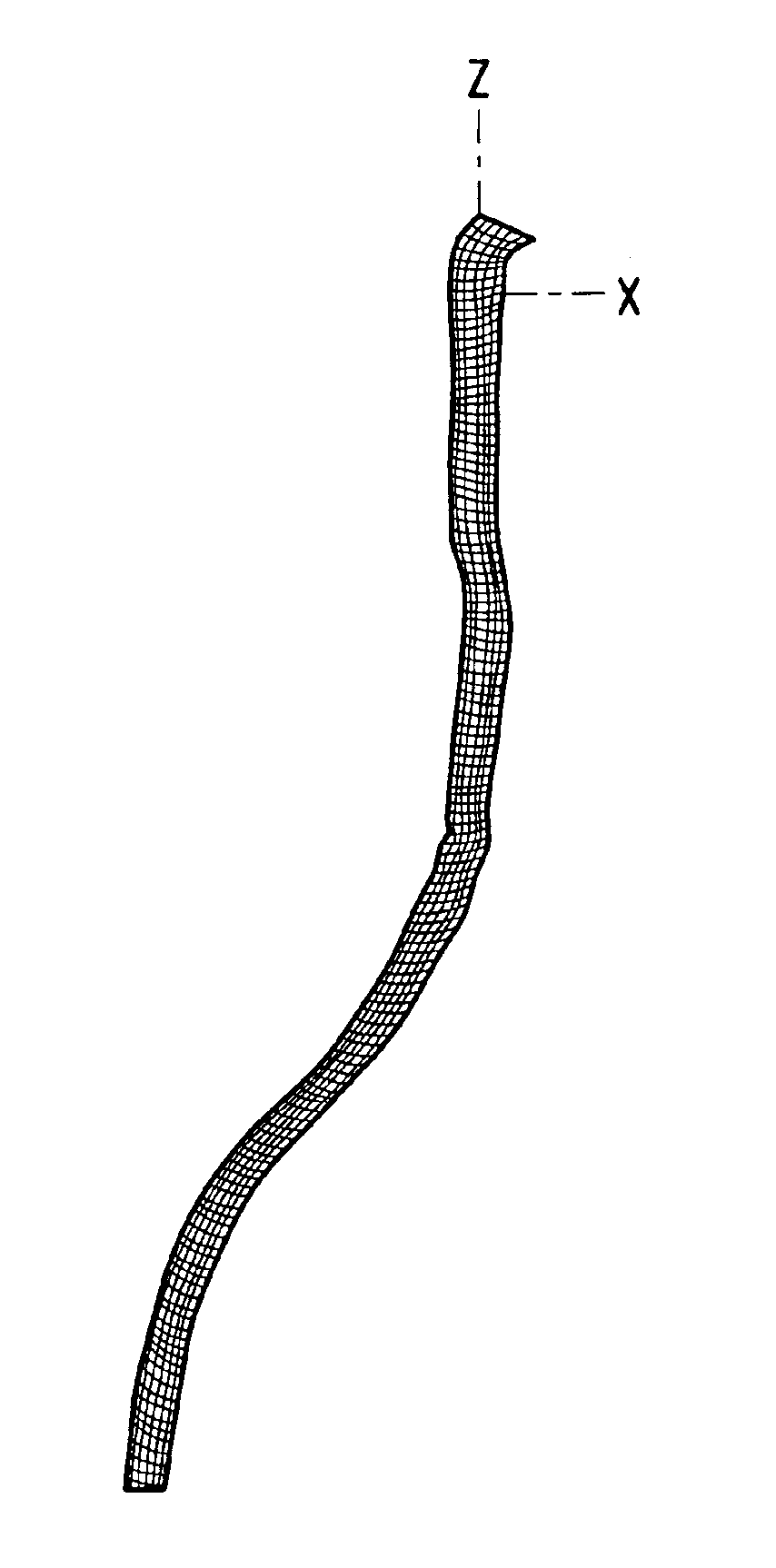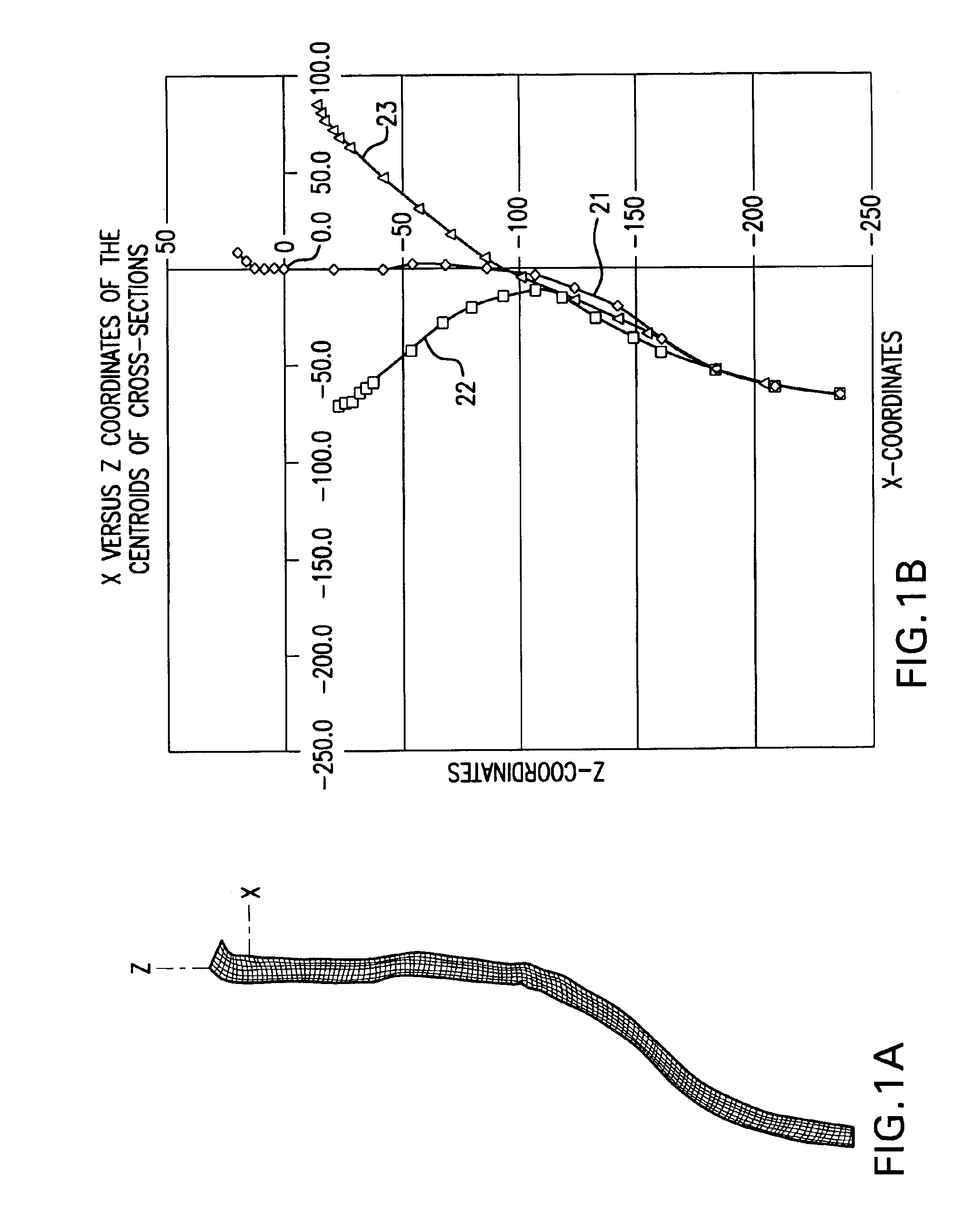Computer simulation model for determining damage to the human central nervous system
a computer simulation and central nervous system technology, applied in the field of medical diagnosis, can solve the problems of inability to demonstrate human symptoms, inability to use, and inability to properly assess the damage of the central nervous system, etc., and achieve the effect of enhancing the use of the system
- Summary
- Abstract
- Description
- Claims
- Application Information
AI Technical Summary
Benefits of technology
Problems solved by technology
Method used
Image
Examples
Embodiment Construction
[0034]The present invention comprises a computerized model of the human spinal cord, the model being useful in determining the probability of various types of future injuries to the spinal cord, and in drawing inferences about how the spinal cord may have been injured in the past.
[0035]The present invention is predicated on the fact that the brain and spinal cord undergo stretching and deformation when subjected to stress. Such stresses may include flexion and extension, lateral bending, stretching, rotation, and compression of the spine or skull. The central nervous system (i.e. the brain and spinal cord) can return to its original position when subjected to normal loads. However, excessive stresses, due to lordosis or kyphosis, may induce excessive stretching of the spinal cord and brainstem, and excessive or abrupt rotation or translation may impart excessive shear forces to the brain and spinal cord. The presence of protuberances anywhere within the path of the brain, brainstem ...
PUM
 Login to View More
Login to View More Abstract
Description
Claims
Application Information
 Login to View More
Login to View More - R&D
- Intellectual Property
- Life Sciences
- Materials
- Tech Scout
- Unparalleled Data Quality
- Higher Quality Content
- 60% Fewer Hallucinations
Browse by: Latest US Patents, China's latest patents, Technical Efficacy Thesaurus, Application Domain, Technology Topic, Popular Technical Reports.
© 2025 PatSnap. All rights reserved.Legal|Privacy policy|Modern Slavery Act Transparency Statement|Sitemap|About US| Contact US: help@patsnap.com



